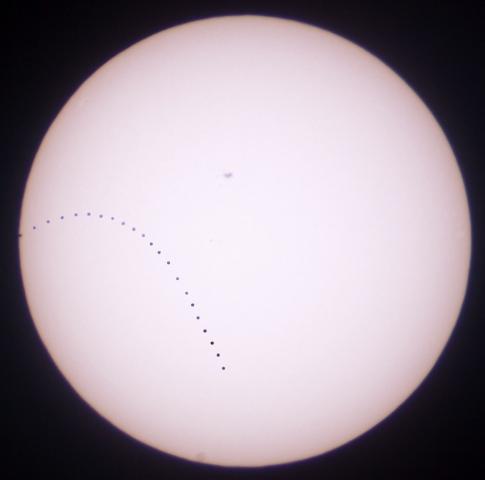Forum Replies Created
-
AuthorPosts
-
 David BaseyParticipant
David BaseyParticipantThanks for the prompt fix Dominic
 David BaseyParticipant
David BaseyParticipantHi Dominic,
Gallery page, click on “Recent Images” top right centre of screen takes you to https://www.britastro.org/gallery_recent
Click on any of the thumbnails and you get a message eg for the first thumbnail The requested page “/gallery_image/8438” could not be found.
Hope this helps.
David.
 David BaseyParticipant
David BaseyParticipantI get the same problem both with Win10, Chrome or Edge and Vista with Chrome or IE9.
 David BaseyParticipant
David BaseyParticipantGary,
There are a couple of other pictures of Caroline Herschel in the Journal as follows:-
1981 (91 4 p402) at the opening of the Herschel Museum.
1985 (95 5 p222) in her obituary by Patrick Moore.
Regards,
David.
 David BaseyParticipant
David BaseyParticipantNortons Star Atlas of course, I still have and use my original Epoch 1950 version.
However for maximum impact and probably the most read is the first Astronomy book I ever purchased and is the one that converted a passing interest into a lifetime hobby. Patrick Moore of course and the book ‘The Observers Book of Astronomy‘. I still have it, the 1965 revised edition price 6 shillings.
David
 David BaseyParticipant
David BaseyParticipantBelow is a composite inage of the transit – with a twist.

The twist is that the images were taken with a 80mm refractor on an alt-az mount. Therefore the line of the “Mercurys” follows what an earth bound observer watching the transit saw as Mercury passed in front of the sun with the Earth rotating on it’s axis. The idea for this came from the display in Xavier Joubier’s page that Nick James highlighted in the first post.
The composite runs from 11:15-16:45 in 15m intervals until clouds finally intruded.
I am old enough to remember the last transit of Mercury that occured on May 9th – 1970. It was pretty clear then too. Best of all it was a Saturday and I did not have to go to school! The next May 9th transit visible from the UK is not until 2095. I doubt I’ll make it!
 David BaseyParticipant
David BaseyParticipantMartin,
I’ve just posted a composite in the main thread. Below is how I went about it.
Please be aware I am light years away from being a Photoshop expert, what follows is a process I cobbled together from bits and pieces of information I had/found. Also I am using Photoshop Elements not CS5 but the similarites should be close enough for you to follow the procedure.
- Open a good image. This will be the base onto which you drop the other images of Mercury.
- Open a second image.
- Cut and paste it into a layer above the first image.
- Change the second layer’s Blending mode to Difference. With the cursor and arrow keys move the image around until it blackens all over.
- The two images are now accurately aligned. Change the Blending mode back to Normal.
- Click the ‘eye’ on the first layer to hide it. This may not be necessary but it makes the next steps a bit clearer.
- Zoom in on the planet in the second layer. Use the Magnetic Lasso or Quick Selection tools to select round the planet.
- Invert the selection, hit delete and then CTRL-D to deselect. You now have a layer with only the planet in it.
- Unclick the eye on the first layer and flatten the layers together.
- You now should have an image with two Mercurys on it.
- Repeat from point two with the remaining images.
- Finally crop and adjust the brightness/contrast of the composite to your liking.
- Post result on BAA forum!
This is how I did it. As I say I am no expert and there are probably better, slicker ways but this way does work.
Good Luck
 David BaseyParticipant
David BaseyParticipantNick,
Love the video, to be honest I think your commentary sums it up nicely.
Obviously not everybody was so impressed. Two and a half minutes in somebody drives a car along the road completely oblivious to the eclipse apart from the concession of having their headlights on!
Here in Norwich it was cloudy until fifteen minutes before the end apart from one brief spell just after mid eclipse when the crescent was visible through a patch of thinner cloud.
Fully concur over Stargazing Live.
David
 David BaseyParticipant
David BaseyParticipantHi James,
I’ve used Sky Safari for a couple of years now and am very pleased with it. It runs quite happily on both my Motorola tablet and Samsung Galaxy S2 phone. It has been updated with comets automatically so for example it includeds the current comet Lovejoy.
It’s now been superceded by Sky Safari 4 which presumably is even better and only costs £1.87 so it is a good fit for your £2 credit.
David.
 David BaseyParticipant
David BaseyParticipantThe next one visible from the UK seems to be 28th September next year.
http://eclipse.gsfc.nasa.gov/LEplot/LEplot2001/LE2015Sep28T.pdf
Presumably it will be cloudy that night.
David.
-
AuthorPosts
